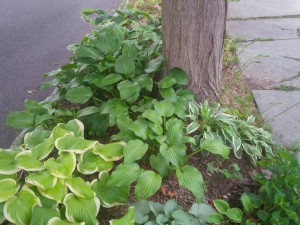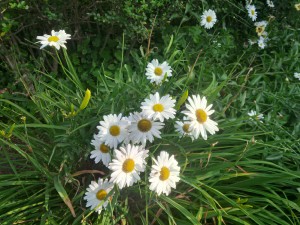 We all make New Year’s resolutions. By now, with winter’s gray days weighing heavily upon us, many have already been broken. But gardening resolutions are different. Those of us in cold winter climates haven’t had the chance to break any resolutions yet, because those resolutions depend on our ability to break the frozen ground. We can feel smug as we thumb the garden catalogs, which still arrive, despite the inroads of online merchandising. Breaking resolutions—or not—will wait until spring.
We all make New Year’s resolutions. By now, with winter’s gray days weighing heavily upon us, many have already been broken. But gardening resolutions are different. Those of us in cold winter climates haven’t had the chance to break any resolutions yet, because those resolutions depend on our ability to break the frozen ground. We can feel smug as we thumb the garden catalogs, which still arrive, despite the inroads of online merchandising. Breaking resolutions—or not—will wait until spring.
Gardeners are eternal optimists. We have to be, because we are always up against the epic forces of weather and soil chemistry, not to mention money and time constraints. Every January, hope begins to triumph over experience as we look forward to spring. My New Year’s garden resolutions are as follows:
Sustainability: This year, I am going to use less plastic in the garden. This means fewer plastic pots and bags. I’ll reuse the pots I have, and try to find garden centers or botanical institutions that will accept donations from my container surplus. When I am buying plants, I’ll look for merchandisers that use biodegradable containers and packing materials.
Last year wasps made a nest in my composter, making it impossible to use. Now that the wasps have departed, I will put the composter into service once more. This will reduce kitchen waste and enrich the garden. But the composter by itself does not have the capacity to deal with the large amount of organic waste material that the garden generates. Leaves are a special problem. This year, I’ll use my mower on the leaf piles and turn those large accumulations into small mounds of shredded-leaf mulch. The mower is electric, so it does not produce the noise or emissions of a gas-powered machine, but it is perfectly capable of handling lots of dry leaves. The free mulch will go on the garden and I will no longer have to bag up leaves and lug the bags out to the curb.

Divide and Conquer: Mature gardens like mine yield all kinds of dividends. One of the best is an abundance of great big perennials that are just begging to be divided. This year, I’ll fill holes in the beds and borders with divisions rather than brand new plants. Dividing plants is a form of garden multi-tasking that actually decreases work and stress while encouraging desirable aesthetic improvements. It renews mature plants, saves money on plant acquisitions, fills up holes and ensures repetition in the planting scheme. That repetition creates the appearance of careful landscape planning, even if the “planning” bears a striking resemblance to random plant installation.
Moving Experiences: Sometimes plant arrangements work; sometimes those arrangements fail. Starting in the spring, I will take stock of my plant combinations and move plants that don’t work well with their neighbors. There is no shame in arranging horticultural marriages that don’t work and there is even less shame in divorcing plants from each other and setting them up in alternate situations. The well-worn gardener’s mantra, “Right plant, right place” says nothing about finding “right” on the first try.
One piece at a time: My garden isn’t large, but it has a number of distinct areas, all with different growing conditions. This coming season, I will take on those separate areas one by one, with an eye to making each one as beautiful as it can be before moving on to the next. Too often my gardening activities are fragmented—a bit of pruning here, followed by planting somewhere else, followed by weeding in a third spot. I may accomplish a lot, but no one area is ever at its very best. Focusing on a single area at a time is hard, especially in spring when everything pops up at once and the number of chores always exceeds the amount of available time. It will take discipline to ignore five needy spaces while perfecting a sixth one, but it is worth a try.
All the Necessary Tools: Most of all, I am going to remind myself regularly that despite not having unlimited financial resources, I have all the tools I need—intellectual, physical and mechanical—to create a wonderful garden. All I have to do is use them consistently.
